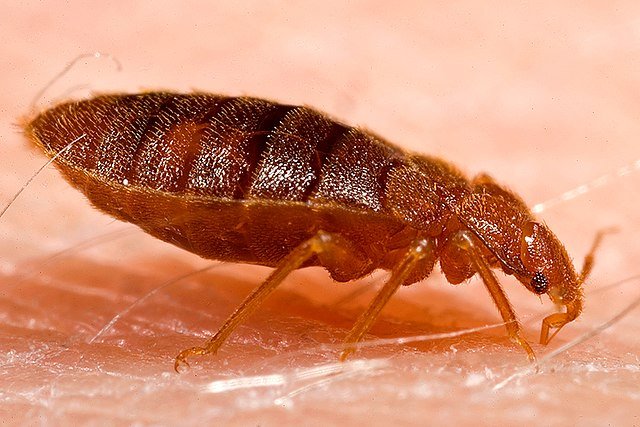Integrated Pest Management (IPM)
 Modern pest control has moved far beyond simply spraying chemicals. One of the most effective approaches is Integrated Pest Management (IPM), a holistic strategy that combines biological, cultural, physical, and chemical tools to minimize pest populations while protecting human health, beneficial species, and the environment.
Modern pest control has moved far beyond simply spraying chemicals. One of the most effective approaches is Integrated Pest Management (IPM), a holistic strategy that combines biological, cultural, physical, and chemical tools to minimize pest populations while protecting human health, beneficial species, and the environment.
While pests like cockroaches (Periplaneta americana), house mice (Mus musculus), and aphids (Aphidoidea) continue to threaten homes, crops, and public health, IPM emphasizes prevention, monitoring, and targeted action. Unlike older blanket pesticide methods, IPM seeks long-term solutions rather than short-term fixes.
This article explores IPM from identification to cultural context, providing practical knowledge for farmers, pest professionals, and property owners worldwide.
Identification
Before implementing IPM, correct pest identification is critical. Misidentification can lead to wasted time, money, and potential harm to non-target organisms.
Insects: Includes crop pests like boll weevils (Anthonomus grandis), whiteflies (Aleyrodidae), and household pests such as German cockroaches (Blattella germanica).
Rodents: Species like roof rats (Rattus rattus) and house mice (Mus musculus) damage food storage and spread disease.
Weeds: Compete with crops for nutrients, water, and light.
Pathogens: Fungi, bacteria, and viruses that destroy agricultural yield.
Accurate identification allows for targeted strategies such as releasing natural predators, using pheromone traps, or applying selective pesticides.
Biology and Ecology
IPM requires understanding pest life cycles and ecological roles.
Reproduction cycles: For example, the mosquito (Culex pipiens) requires water for egg laying. Removing stagnant water disrupts its breeding.
Feeding behavior: Termites (Isoptera) attack cellulose-rich materials; knowing this helps in using baiting systems.
Predators and natural enemies: Lady beetles (Coccinellidae) consume aphids, while parasitic wasps control caterpillars.
Seasonal dynamics: Pests often surge with temperature and humidity shifts, e.g., brown marmorated stink bug (Halyomorpha halys) in autumn.
By studying ecology, pest managers predict outbreaks and intervene at the most vulnerable stage of the pest’s cycle.
Global Distribution
IPM strategies are applied worldwide, but implementation varies:
North America: Widely adopted in agriculture, especially for corn, cotton, and orchard crops. Universities promote IPM through extension programs.
Europe: EU policy encourages reduced pesticide reliance, integrating biological controls in vineyards and greenhouses.
Asia: Rice paddies in Southeast Asia benefit from predator-friendly IPM, reducing pesticide use.
Africa: Smallholder farmers rely on IPM for maize and cassava, controlling stem borers and whiteflies.
Latin America: Coffee and banana plantations adopt IPM to balance export requirements and sustainability.
Pests like locusts (Schistocerca gregaria) and tuta absoluta (South American tomato moth) highlight the need for regional cooperation.
Risks and Damage
Unchecked pests can cause:
Health risks: Rodents spread hantavirus and salmonella; mosquitoes transmit malaria and dengue.
Crop losses: Aphids and caterpillars can reduce yields by 30–70%.
Structural damage: Termites cause billions in global building losses annually.
Economic disruption: Export bans occur when invasive pests like Mediterranean fruit fly (Ceratitis capitata) are detected.
Overuse of pesticides brings risks too: resistant pest populations, pollinator declines, and contaminated water sources. IPM mitigates these issues.
Signs of Infestation
Indicators that call for IPM measures include:
Visible pest activity: droppings, gnaw marks, insect swarms.
Plant symptoms: yellowing leaves, distorted growth, leaf miners.
Structural damage: sagging wood (termites), frayed wires (rodents).
Monitoring tools: pheromone traps, sticky boards, motion cameras for nocturnal pests.
Early detection ensures cost-effective and environmentally friendly interventions.
Control Methods
IPM integrates multiple tactics:
Cultural control
Crop rotation to reduce soil-borne pests.
Sanitation in kitchens and warehouses.
Habitat modification to deny pests food and shelter.
Mechanical/physical control
Traps for house mice and roof rats.
Barriers, nets, and row covers in agriculture.
Exclusion sealing for buildings.
Biological control
Releasing predators like lacewings against aphids.
Introducing parasitoids for moth larvae.
Using microbial agents such as Bacillus thuringiensis against caterpillars.
Chemical control
Spot treatment with selective pesticides.
Baits and insect growth regulators (IGRs).
Always used as a last resort in the IPM hierarchy.
Advanced Approaches
Modern IPM goes beyond traditional practices:
Precision agriculture: Drones and sensors monitor pest hot spots, guiding targeted interventions.
Pheromone disruption: Synthetic pheromones confuse moths and reduce mating success.
Genetic methods: Release of sterile insects to suppress pest populations.
Biotechnological crops: GMO crops resistant to specific pests (e.g., Bt corn).
Data-driven software: Predictive modeling to forecast pest outbreaks.
These innovations enhance IPM efficiency while lowering pesticide dependency.
Cultural and Historical Context
Humanity’s fight against pests is ancient.
Ancient Egypt: Cats were revered partly for their role in rodent control.
China: Farmers used ants to protect citrus groves as early as the 4th century CE.
Middle Ages: Rats and fleas helped spread the bubonic plague, shaping European history.
20th century: Chemical pesticides like DDT were celebrated, only later to be restricted due to environmental damage.
The rise of IPM reflects society’s shift toward sustainable, science-based solutions.
FAQ
Q1: What is the main goal of Integrated Pest Management?
To manage pests effectively while minimizing risks to humans, beneficial species, and the environment.
Q2: Does IPM mean no pesticides at all?
No. It means pesticides are used selectively and only when other methods fail.
Q3: Is IPM more expensive than traditional pest control?
Initially, monitoring costs may be higher, but long-term savings from reduced pesticide use and crop protection outweigh this.
Q4: Can IPM be used in urban settings?
Yes. IPM applies to homes, schools, hospitals, and food storage facilities.
Q5: How does IPM help the environment?
By protecting pollinators like honey bees (Apis mellifera) and reducing chemical residues in soil and water.
Q6: Who benefits most from IPM?
Farmers, homeowners, public health systems, and the global environment all benefit
Final Thoughts
Integrated Pest Management (IPM) is not simply a pest control technique; it is a philosophy that combines prevention, monitoring, and targeted intervention. Instead of depending solely on chemicals, IPM builds a layered defense using cultural practices, biological agents, physical barriers, and—only when necessary—carefully chosen pesticides.
The strength of IPM lies in its adaptability. Farmers in rice fields, vineyard managers, urban pest controllers, and homeowners facing cockroach or mouse infestations can all apply the same principles. By focusing on long-term prevention and minimizing collateral damage, IPM delivers safer food, healthier cities, and more sustainable agriculture.
Adopting IPM means embracing a smarter relationship with nature—one where we manage pests without destroying ecosystems. As global trade, climate change, and urbanization continue to expand pest threats, IPM remains the most resilient strategy available.
Disclaimer
This article is for informational purposes only. Pest control laws and approved chemicals vary by country. For best results and legal safety, we strongly recommend contacting a licensed pest control professional in your local area. Always make sure that the pest control technician is properly certified or licensed, depending on your country’s regulations. It’s important to confirm that they only use approved products and apply them exactly as instructed on the product label. In most places in Europe, UK, or USA, following label directions is not just best practice—it’s the law.
Author Bio
Nasos Iliopoulos, BSc Agronomist & Certified Pest Control Expert
Scientific Director – Advance Services (Athens, Greece)
Licensed Pest Control Business – Ministry of Rural Development & Food (GR)
References
European Comission - Integrated Pest Management (IPM)
Wikipedia - Integrated pest management

